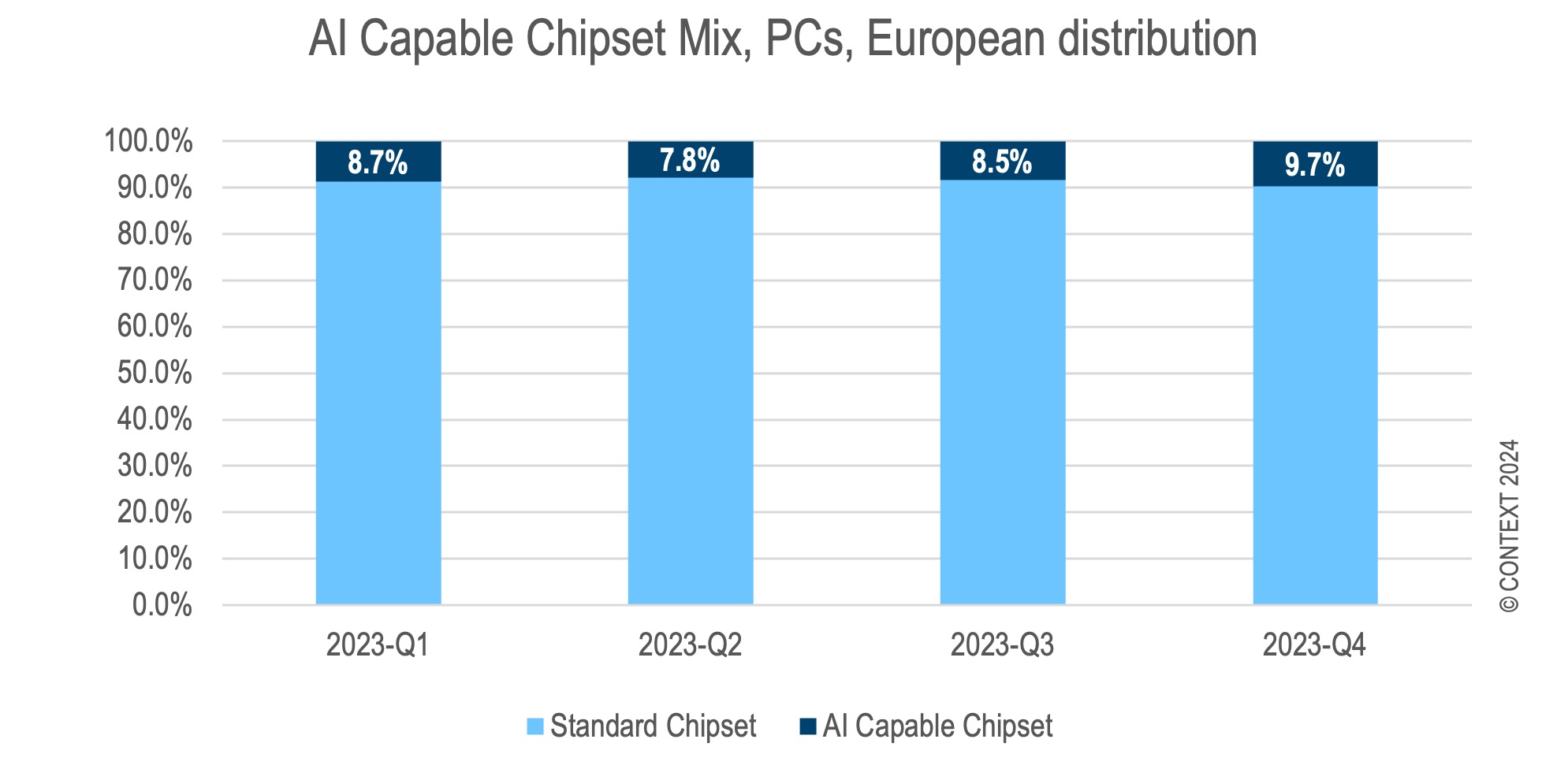It’s hard to talk about any current
trends in IT without mentioning AI. Thanks to the breakout success of
ChatGPT last year, there has been a surge of similar chatbot
applications from Google, GitHub, and other companies. These
applications are all powered by large language models (LLMs).
Now a new generation of chips is
baking AI into PCs. It could signal a new surge in demand from
consumers and businesses keen to take advantage.
Operating locally
AI has use cases across the business
and consumer spectrum, from enhancing the productivity of coders to
virtual smart home assistants. Once the processing power needed by AI
algorithms could only be delivered by back–end cloud servers – often
in supercomputers. The emergence of a new type of chips has made it
possible for AI to become a reality at device level.
AMD’s Ryzen AI, Apple’s M3,
Qualcomm’s Snapdragon X Elite and Intel’s Core Ultra chip are among
current AI designs making their way into PCs, although more are
expected to follow. They feature dedicated Neural Processor Units
(NPUs), which help to accelerate AI tasks/applications locally
rather than needing to reach out to cloud servers.
More use cases, more demand
The impact of these could be
significant. PC demand has been depressed since a pandemic-era surge
in sales. But as more use cases emerge, organisations will begin to
covet AI–enabled devices in order to stay competitive, while consumers
will see them as a must-have for creative tasks and gaming.

This won’t happen overnight. In Q4 2023, according to CONTEXT’s
European distribution data, 10% of PCs were based on AI–capable
chipsets. All of these were Apple’s M or AMD, but we will soon see
products based on more recently launched chips, and new players could
enter the market. This could bring about changes to the processor
vendor landscape: as of the last quarter of 2023, Intel held 73% of
the European PC distribution market followed by AMD (17%) and Apple
(7%). But new chip launches will enhance the options available to
customers. Qualcomm for example, may successfully expand its
long–established presence in portable devices to notebooks.
This will likely start to influence
the market towards the end of 2024, and then even more clearly in 2025.
CONTEXT
subscribers will soon be able to read full details on the
processor vendor landscape and on AI PC sales in their
SalesWatch Distribution and Total
Market reports.
Stay updated on the latest news and
developments about this and other trending topics by following CONTEXT
Europe on LinkedIn.